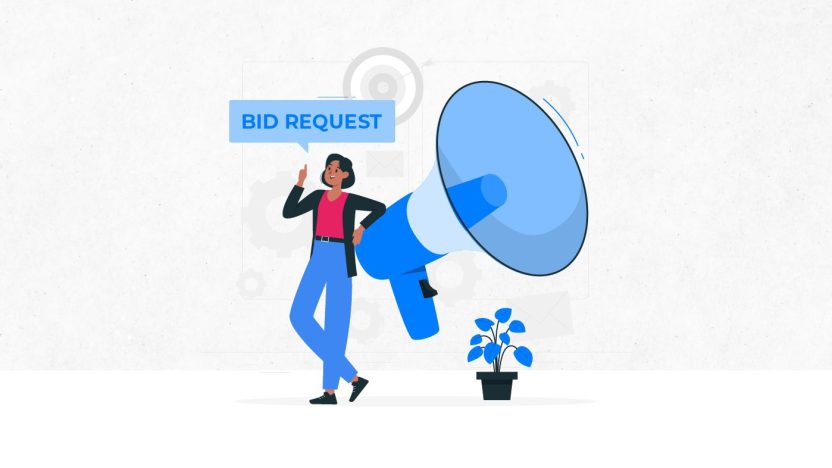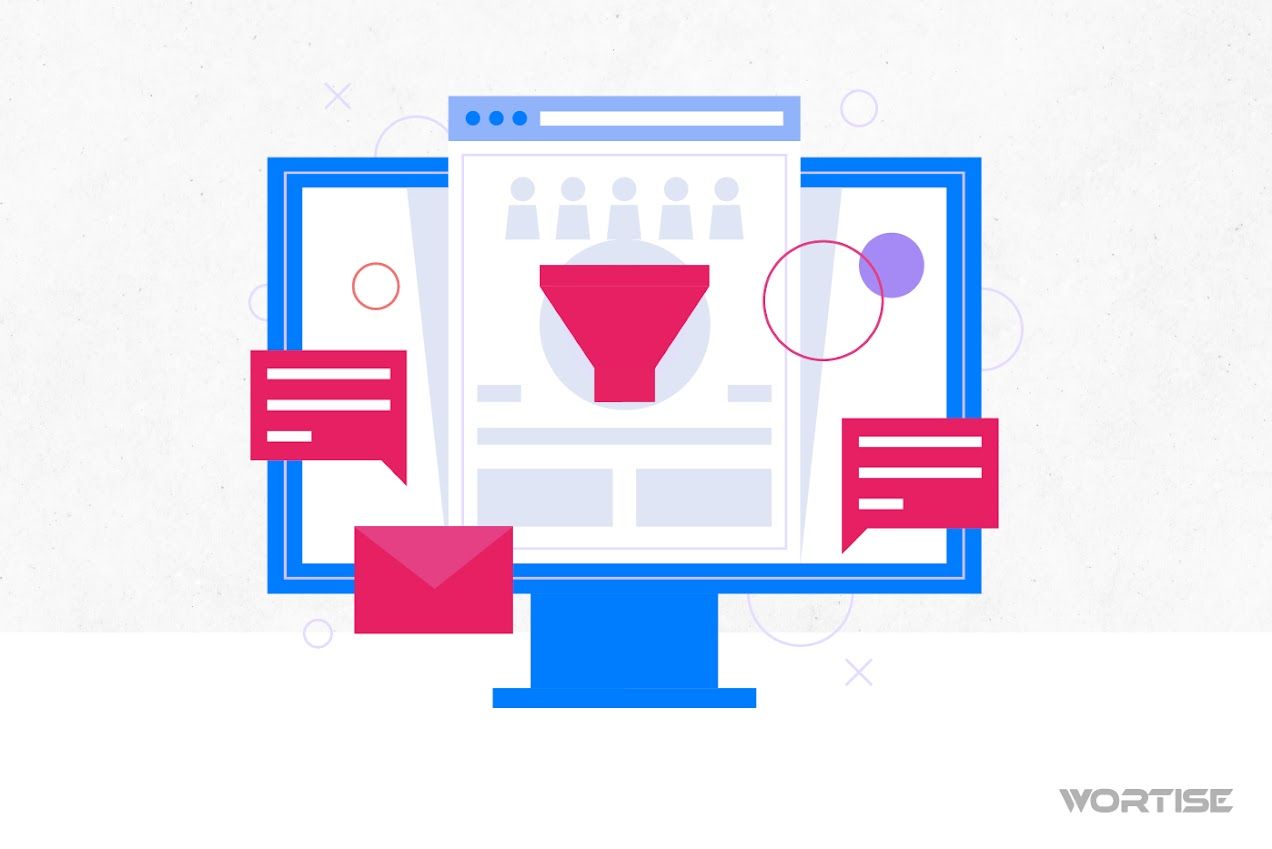Digital advertising is becoming increasingly dynamic and competitive. Therefore, bid requests, also known as offer requests, act as important elements that help publishers drive the buying and selling of advertising spaces in real-time.
As a publisher, understanding how these requests work will allow you to improve and increase the efficiency of your strategies, as well as maximize revenue from your advertising spaces.
What is a Bid Request?
Have you ever participated in or witnessed an auction? Now imagine that the product or service being bid on is your advertising space, your website, or an app. In this sense, the bidders are the advertisers competing to display their ads in those spaces.
Bid requests specifically are signals that ignite this digital auction dynamic. They are messages sent by the ad exchange or sell-side platform (SSP), tools for buying and selling advertising media, directed to multiple demand-side platforms (DSPs). The intention is to inform them about the opportunity to bid for a specific advertising space on your platform.
Within programmatic advertising, there are other associated concepts, and understanding them provides better management of this context:
What is an Ad Request?
It is another digital messenger that contains a signal, a request, that goes directly to the ad exchange platform. What does it request? To bring an ad that is compatible with the empty advertising space on a web page or mobile application.
This happens when a user visits a web page or uses the apps on their phone and finds blank spaces reserved for ads. The ad request tells the ad server: “I need an ad here, as soon as possible!”.
Ad requests play a fundamental role as pieces of the puzzle in digital advertising. They are essential for the right ads to reach the right people at the right time.
What is a Bid Response?
A bid response is the result that notifies the advertiser of a publisher’s bid request. When an advertiser decides that the advertising spaces offered through a bid request have the characteristics needed for their campaign, they can respond with an offer through the real-time bidding system.
The advertiser’s response to the bid request will include details of the advertising campaign, characteristics of the target audience, bidder data, among other things.
What is RTB?
RTB, which stands for real-time bidding, is another subcategory of programmatic media buying. It refers to the practice of buying and selling advertising spaces immediately, i.e., “in real-time” through an instant auction. This is usually facilitated by a sell-side platform (SSP) or an ad exchange.
An SSP is software that allows publishers to sell impressions of display, mobile, and video ads to potential buyers automatically and in real-time. This includes ad exchanges, networks, and demand-side platforms (DSP), giving publishers greater control over their inventory.
Detailed Analysis of a Bid Request: What’s Inside This Code?
As mentioned earlier, bid requests are signals in the form of code that contain relevant information about publishers for advertisers. They specifically share the following data:
- Bid Request Identification: A unique identifier assigned to each bid to identify it.
- User Details: Includes data such as user location, age, gender, preferences, browsing history, etc. Advertisers can use this information for future advertising strategies.
- User Access Channels: Provides information about the devices users are using, the type, model, operating system, and more during the website visit.
- Application: Ad bids for applications include information such as app ID, content types, publisher ID, etc.
- Extension: Shows additional information related to inventory for demand-side platforms and advertisers.
- Website Data: Content, publisher ID, domain name, page context such as published information, among others.
- Time: The time elapsed during the user’s journey on the platform, from entry to the end of the session.
- Tags and Pixels: A tag, often known as a pixel, is a small piece of JavaScript (JS) code used in marketing and advertising to collect data about website visitors and their activities.
- Detailed Information: The bid request contains crucial information about the advertising opportunity, such as ad location, ad type (banner, video, etc.), advertiser budget, and even historical performance metrics.
How Does a Bid Request Work?
Each time a user enters a web page, this process starts automatically. Once on the digital portal or platform, the bid request is activated. Through this process, rich in valuable information for advertisers, various data are included, such as the viewer’s demographic characteristics, browsing history, location, and website visits.
Next, the bid request goes from the publisher’s website to the platform where ad exchanges, buying, and selling of advertising spaces take place. This is where all the collected user data is sent to advertisers, who in turn send bids automatically in real-time to place their ads.
Advertisers make bids for ads based on impressions as they are published. As in any auction, the advertiser with the highest bid wins the impression or advertising space, and the ad is displayed on the publisher’s website (possibly yours).
This process occurs the same way and as many times as you have advertising spaces on your digital platform. How fast does this happen? Real-time bidding transactions generally occur within 100 milliseconds (including receiving the bid request and publishing the ad), as fast as a blink of an eye. All of this happens from the moment the ad exchange platform received the bid request.
Since all this happens so quickly and bids are made autonomously, advertisers control the budget they can allocate to these actions by setting bids and maximum amounts for an advertising campaign.
Advantages and Disadvantages of Bid Requests
Bid requests are the foundation of programmatic advertising, where publishers and advertisers connect in real-time. Some of their advantages and disadvantages are:
Advantages
- Publishers with More Revenue: It’s as simple as a law of supply and demand. The opportunity to reach more advertisers will open the doors for you to obtain higher revenue from your advertising space inventory.
- Greater Relevance for Users: Bid requests also promote the development of advertising experiences oriented to users’ interests, making them more relevant. All thanks to these codes containing highly relevant user data.
- More Efficient Advertisers: Bid requests allow saving time and money, thanks to the automation of purchase processes and the assignment of maximum amounts for bids. This way, they can reach a wider audience through a single platform.
Disadvantages
- Privacy Concerns: Depending on the country, there are increasing regulations aiming to regulate the collection of user data. Likewise, more informed users protect their data and are concerned about the privacy of their online actions.
- Ad Fatigue and Intrusiveness: Segmentation and lack of control over ad automation prevent tracking how many times the same user will see the same ad. Therefore, they may encounter the same campaign repeatedly on different web pages, generating ad fatigue and a negative experience.
- Complexity and Transparency Issues: The real-time ad bidding system can be difficult to understand, making it complicated for publishers and advertisers to fully comprehend how the value of an advertising space is being assigned and how their ads are being delivered.
Privacy Concerns and Solutions
Local authorities in each country and increasingly informed users are pushing the privacy of their data to stricter regulations. A fact that affects bid requests, which can contain very specific information such as IP address, browsing history, user interests, and preferences.
Although this data is valuable to advertisers, it also raises concerns about surveillance and misuse of personal data. Because, often, users are unaware of the amount of data collected and shared through bid requests. A scenario that can generate distrust in digital advertising.
Privacy Solutions
Some privacy solutions can be:
User Consent
Clear and transparent consent mechanisms are being implemented in the advertising market, intending to allow users to control what data is being delivered through their interactions via bid requests.
Pseudonymization and Anonymization
The first seeks to make the process of identifying or attributing certain data to a specific person more complex, while the second prevents information from being related to a physical person. Both techniques are used for handling personal data collected by bid requests.
Contextual Targeting
It is another way to target ads; instead of using users’ personal information, it focuses on the web page or publisher app data.
Collaboration with Trusted Partners
Sometimes, advertisers are not clear or lack full control over their ads. Therefore, it is important to work with ad exchanges, SSPs, and DSPs committed to best data privacy practices.
Adopt Industry Standards
Implementing standards like GDPR and CCPA to ensure compliance with data privacy regulations.
Best Practices for Publishers in Managing Bid Requests
Bid requests help you as a publisher play an important role in balancing monetizing ad revenue and providing a pleasant user experience. So, how can this be achieved? With these tips:
1. Improving the Quality of Bid Requests for Higher Bids
To increase bid rates, focus on improving the quality of the information in your bid requests. The more data you provide to advertisers, the better they can target their ads, and the more likely they are to make higher bids.
Optimize your bid requests by including detailed profile information of users entering the platform, relevant ad inventory data, and additional information that can help advertisers make informed decisions and improve their performance.
2. Ensure Data Accuracy in Bid Requests
Accuracy is crucial in programmatic advertising, so validate your data and periodically review the information you offer to your advertisers about your audience profile and ad inventory to ensure it is accurate and up to date. Stay updated with users’ interests and preferences, as these change constantly, so it’s important to update their data regularly.
3. Leverage Ad Format and Placement for Higher Bid Rates
The experience your website or mobile app offers is also valuable to advertisers. The format and placement of your advertising spaces can significantly affect bid rates, as advertisers are more likely to respond with higher investment for locations that offer better visibility and engagement.
To do this, you can experiment with different formats, sizes, and ad placements on your site to find combinations that produce the best results. But this is an ongoing job; continuously monitor and analyze the performance of ad blocks to make data-driven decisions about ad placement.
4. Leverage Audience Data
Audience data plays a crucial role in bid requests, as advertisers use this information to design campaigns focused on users’ interests and preferences.
Proactively and carefully collect your own audience data through registration forms, surveys, and user interactions with your website, helping meet privacy and information needs for campaigns.
Attention Publisher! Increase Your Advertising Earnings with Wortise
We want to help you increase the performance of your advertising space inventory. With Wortise, you will be able to reach a large number of advertisers and safely monetize your website or mobile application.
We can currently help you connect with over 200 advertisers worldwide and also provide you with a wide network of Ad Networks.
Are you ready to take the next step? We will accompany you throughout the process, providing personalized support to start monetizing your platforms with Wortise.




